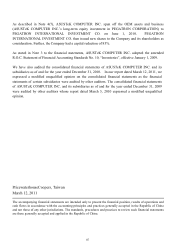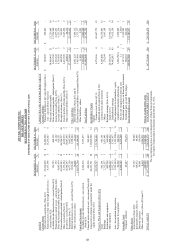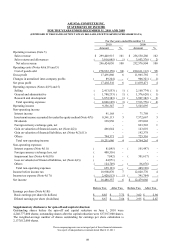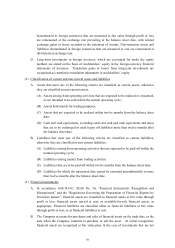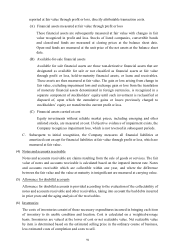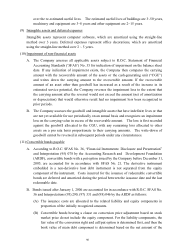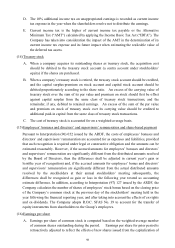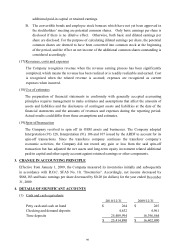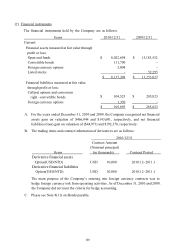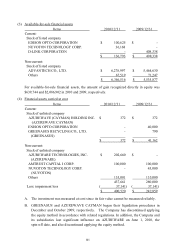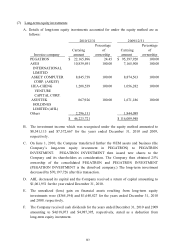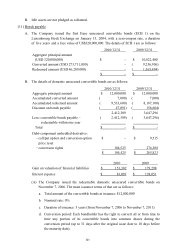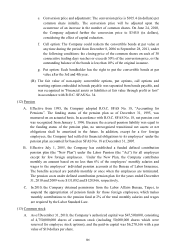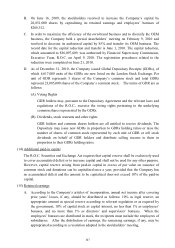Asus 2010 Annual Report Download - page 101
Download and view the complete annual report
Please find page 101 of the 2010 Asus annual report below. You can navigate through the pages in the report by either clicking on the pages listed below, or by using the keyword search tool below to find specific information within the annual report.
97
issuance price after deducting the fair value of the call/put option and conversion
right with a clause on price adjustment.
(C) Convertible bonds are subsequently measured at amortized cost. Derivatives with
call/put options and conversion rights with a clause on price adjustment are
recognized as “financial liabilities at fair value through profit or loss” and are
subsequently measured at fair value. Movements in the fair value of the derivatives
are recognized as “gain/(loss) on valuation of financial liabilities”.
(D) If the bondholder exercises the right to convert the bonds ahead of the maturity date
of the bond, the book value of the liability component is adjusted to the value on the
conversion date, which serves as the basis for the recording of the issuance of
common stock so that no conversion gain and loss is recognized thereon.
(E) If the bondholder is eligible to exercise the put option within one year, the bonds
payable are reclassified as current liability. When the put option expires, those bonds
payable are reclassified as long-term liability if the liability meets the definition of
long-term liability.
(12) Pension
A. Under the defined benefit pension plan, net periodic pension costs are recognized in
accordance with the actuarial calculations. Net periodic pension costs include service cost,
interest cost, expected return on plan assets, and amortization of unrecognized net
transition obligation and gain or loss on plan assets. Unrecognized net transition
obligation is amortized on a straight-line basis over the employees’ remaining service
period.
B. Under the defined contribution pension plan, net periodic pension costs are recognized as
incurred.
(13) Income tax
A. Income tax is calculated on the basis of accounting income. The differences between the
tax bases and the book values of assets and liabilities are recorded as deferred tax using
the enacted tax rates for the periods in which the deferred tax is expected to be reversed.
The tax effects from taxable temporary differences are recognized as deferred tax
liabilities, while the deductible temporary differences and investment tax credits are
accounted for as deferred tax assets, which are assessed an allowance for deferred tax
assets based on further realization.
B. Deferred income tax assets or liabilities are classified as current or non-current based on
the classification of items that resulted in the deferred item or based on the timing of the
expected reversal, for certain transactions not directly related to an asset or liability.
When a change in the tax laws is enacted, the deferred tax liability or asset is recomputed
accordingly in the period of change. The difference between the new amount and the
original amount, that is, the effect of changes in the deferred tax liability or asset, is
recognized as an adjustment to current income tax expense (benefit).
C. Over or under provision of prior years’ income tax liabilities is included in current year’s
income tax.


